Celebrating 50 years of Freeport Station in Boothbay
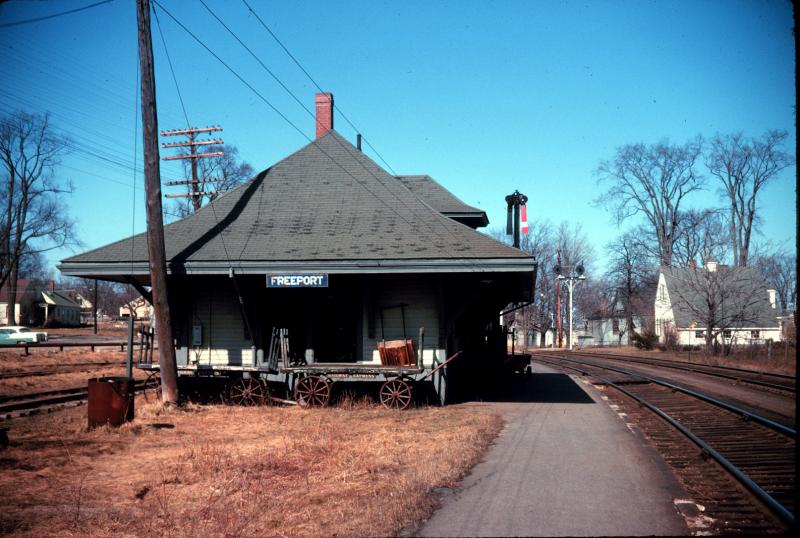 Freeport Station in its original location in Freeport, Maine. All photos courtesy of Boothbay Railway Village
Freeport Station in its original location in Freeport, Maine. All photos courtesy of Boothbay Railway Village
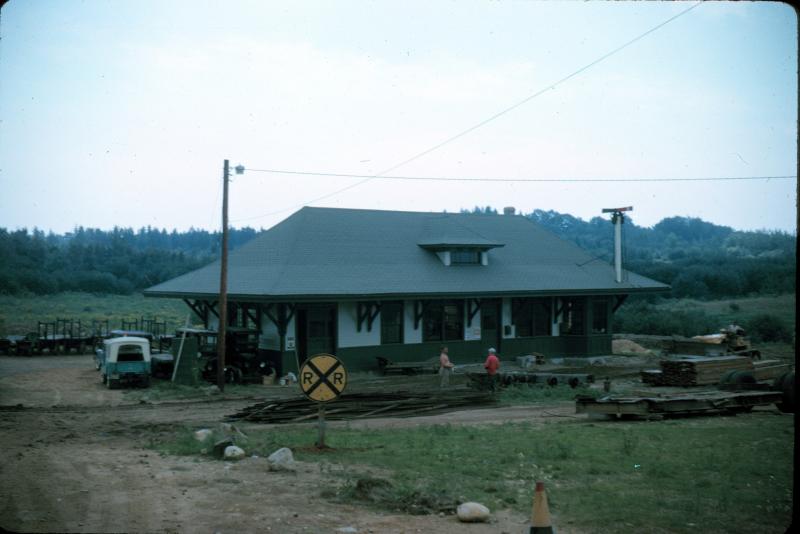 Photo taken in spring or early summer of 1964 after Freeport Station had been moved to Boothbay. Early work on the railroad tracks can be seen in the foreground.
Photo taken in spring or early summer of 1964 after Freeport Station had been moved to Boothbay. Early work on the railroad tracks can be seen in the foreground.
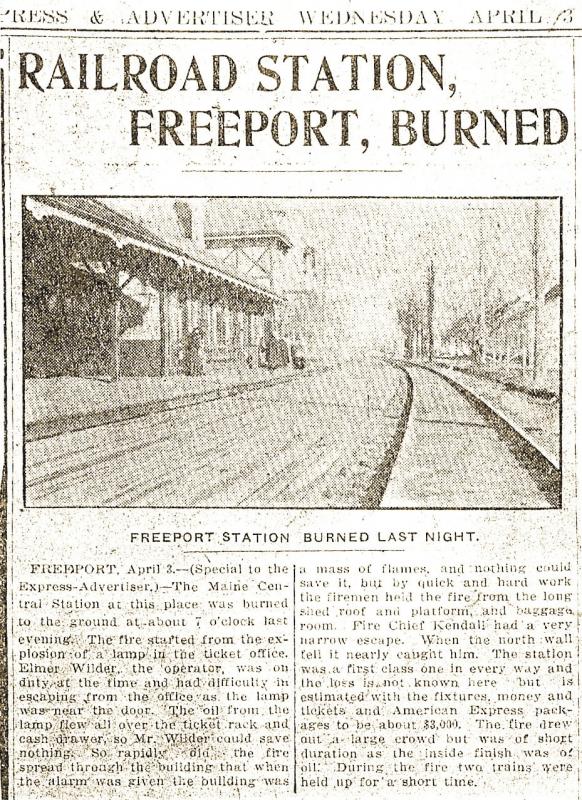
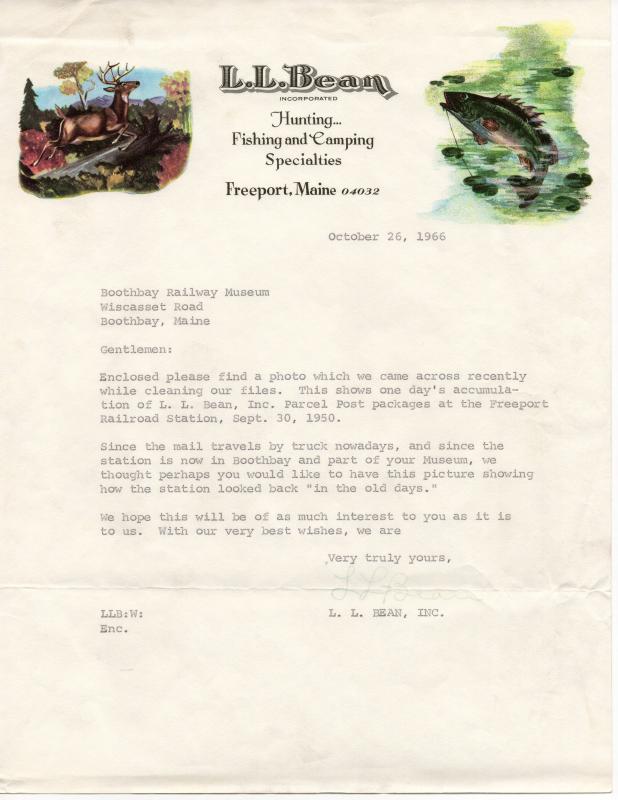
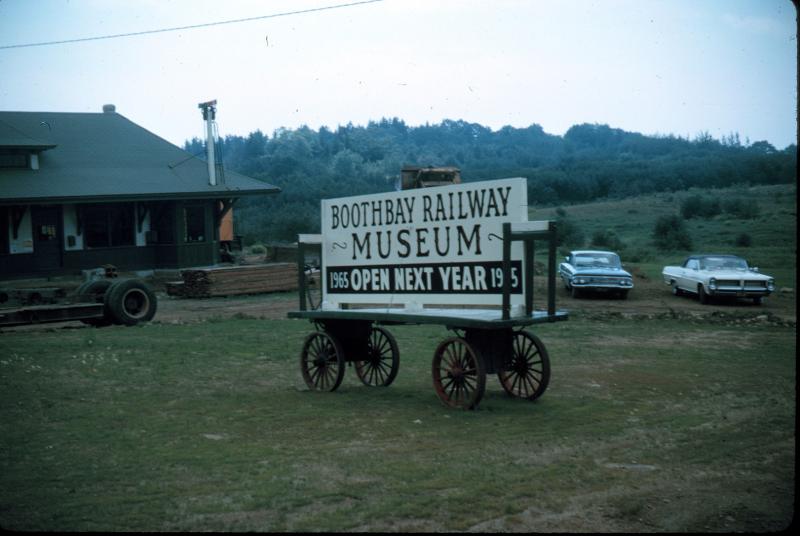 As work progressed, a sign was posted to announce the planned 1965 opening of the Boothbay Railway Museum.
As work progressed, a sign was posted to announce the planned 1965 opening of the Boothbay Railway Museum.
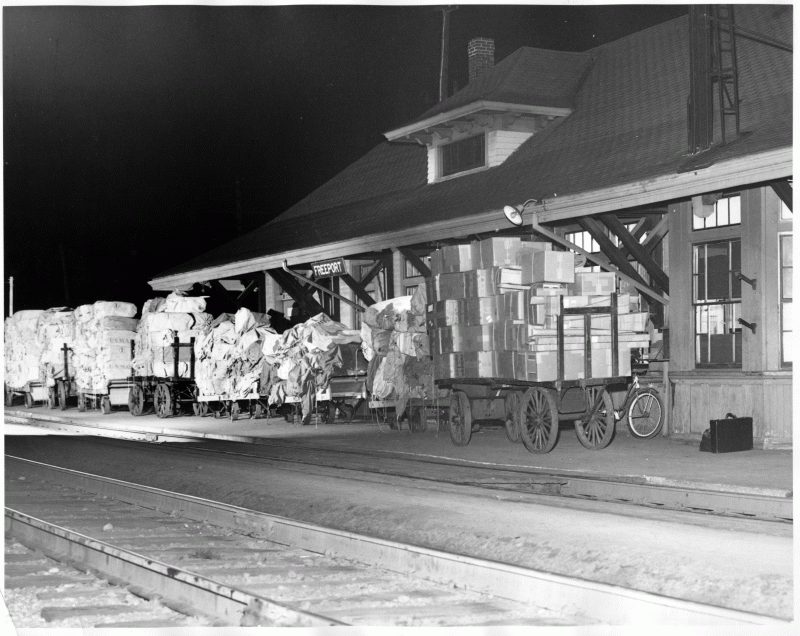 Photo shared with the Boothbay Railway Museum in 1966 from L.L.Bean’s archives. The image was taken on September 30, 1955 and shows carts loaded with L.L.Bean goods ready to travel by train.
Photo shared with the Boothbay Railway Museum in 1966 from L.L.Bean’s archives. The image was taken on September 30, 1955 and shows carts loaded with L.L.Bean goods ready to travel by train.
 Freeport Station in its original location in Freeport, Maine. All photos courtesy of Boothbay Railway Village
Freeport Station in its original location in Freeport, Maine. All photos courtesy of Boothbay Railway Village
 Photo taken in spring or early summer of 1964 after Freeport Station had been moved to Boothbay. Early work on the railroad tracks can be seen in the foreground.
Photo taken in spring or early summer of 1964 after Freeport Station had been moved to Boothbay. Early work on the railroad tracks can be seen in the foreground.


 As work progressed, a sign was posted to announce the planned 1965 opening of the Boothbay Railway Museum.
As work progressed, a sign was posted to announce the planned 1965 opening of the Boothbay Railway Museum.
 Photo shared with the Boothbay Railway Museum in 1966 from L.L.Bean’s archives. The image was taken on September 30, 1955 and shows carts loaded with L.L.Bean goods ready to travel by train.
Photo shared with the Boothbay Railway Museum in 1966 from L.L.Bean’s archives. The image was taken on September 30, 1955 and shows carts loaded with L.L.Bean goods ready to travel by train.
It’s been 50 years since George McEvoy bought and moved the Freeport Train Station to Boothbay. That purchase, precipitated by his mother’s ultimatum to get his collections out of her house, was one of many that has preserved a slice of Maine’s history for future generations.
By 1963, McEvoy was amassing a collection of railroad memorabilia that was driving his mother mad. He had filled the family home in Grafton, Mass. and it appeared that their Southport summer cottage was about to succumb to the same fate. He had to find a place to store his collection.
Teaching in Bowdoinham at the time, McEvoy had befriended Phillip Carr, the station agent at Freeport, on frequent visits on days off. On one such visit a sign was posted on the door that said the station would be closing. When Carr told McEvoy that the station itself would be put up for sale the first idea of having a Museum took hold.
The historic depot had been built in 1912 to replace the one burned in 1911. It was of a style called a New York Central type, and was one of the youngest in the State. During its heyday it saw bundles of L.L.Bean parcels leaving for destinations around the world and visitors coming to Maine for fresh air and a recreation. By 1961, passenger service had been discontinued. Most of the freight has also shifted to truck transportation, the only major client was the U.S. Mail.
On January 2, 1964 Maine Central Railroad Officials announced that McEvoy had submitted the winning bid to purchase the historic station. George believes to this day that he could not have possibly been the highest bidder but that the Railroad must have looked favorably on his plan to turn it into a Museum.
A new problem arose in that a 60 foot by 22 foot building was not going to fit in the backyard on Southport. George frantically searched for a piece of property that would be the new home to the station and found a 15 acre parcel along Route 27 in Boothbay.
The next issue to address was how to move the building itself. It was 50 miles from Freeport to Boothbay and the old Carleton Bridge over the Kennebec River in Bath was smack dab in between. “They said it couldn’t be done. The building was too big to move. It only made me all the more determined to do it,” McEvoy said.
As luck would have it McEvoy just happened to know the guys to help. While a foundation was dug and concrete poured at the site, Torben Anderson, Maine Truck Owner’s Association, and Jack Ballard, Kennebec Trucking, planned out the route. According to McEvoy, Torben Anderson gave him a deal because he wanted to show the public that trains were obsolete and that it would take a truck to move a train station.
Frank T. Greenleaf of Westport Island sawed the building into a total of nine pieces, four for the structure and five for the massive roof with 7-foot overhangs. Even the bricks from the chimney were dismantled to be moved to Boothbay.
On February 3, 4 and 5, 1964 the nine pieces were each loaded one at a time. A total of nine trips, three per day, crawled at a snail’s pace on the backs of flatbeds up Route 1 to Brunswick, Route 24 through Brunswick, back to Route 1 through Bath and Wiscasset and finally to Route 27. State Police Troopers accompanied the entourage stopping traffic and guiding the way. According to legend, the employees at Bath Iron Works all left their stations to come watch the spectacle of the huge pieces narrowly clearing the bridge at one time with just two inches of clearance.
Once in Boothbay, the building was reerected where it remains today. When it opened to the public in 1965 it became Maine’s first public railway museum.
The story obviously doesn’t end there. The Boothbay Railway Village will be celebrating many more milestones over the next two calendar years leading up to the July 2015 50th museum.
During the 1980s, the Boothbay Railway Village became a 501(c)3 nonprofit organization governed by a board of directors and funded by charitable contributions from the public, grants from foundations and proceeds from special events and admission. Today, the museum’s collections include 28 historic Maine buildings and structures including the 1912 Freeport Station, 1847 Boothbay Town Hall, and 1871 Thorndike Station. More than 60 antique autos are on view from a 1902 Rambler to a 1962 Rolls Royce Silver Cloud II. Perhaps most unique to the Museum is the opportunity to ride a narrow gauge steam train every day that the Museum is open from May-October as well as during special events.
The Boothbay Railway Village is located at 586 Wiscasset Road, Route 27 in Boothbay, Maine. To learn more visit www.railwayvillage.org.































